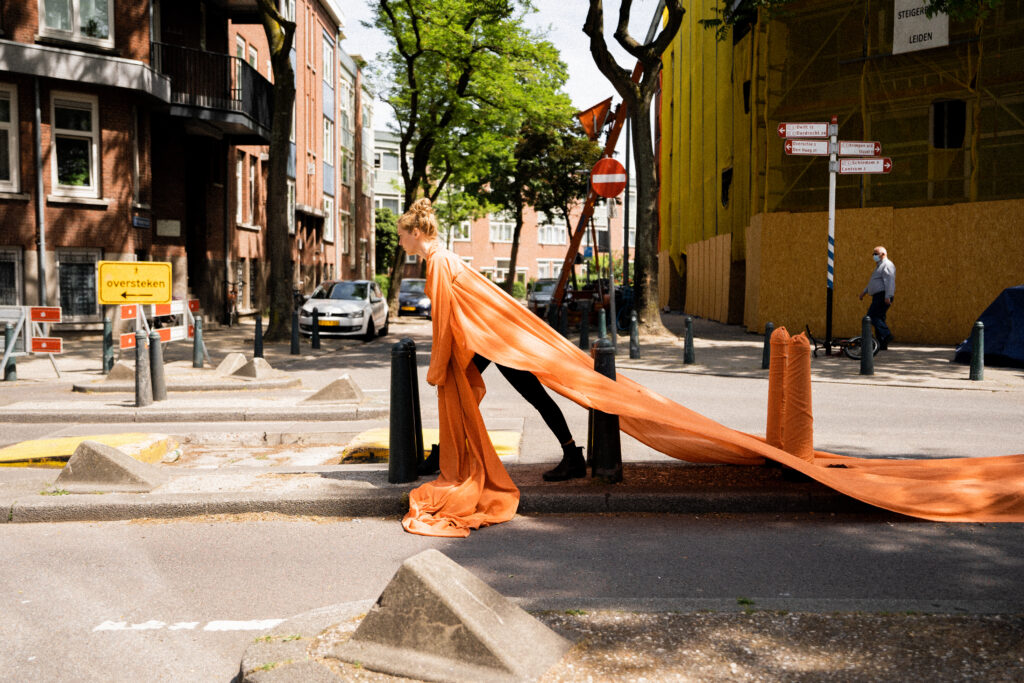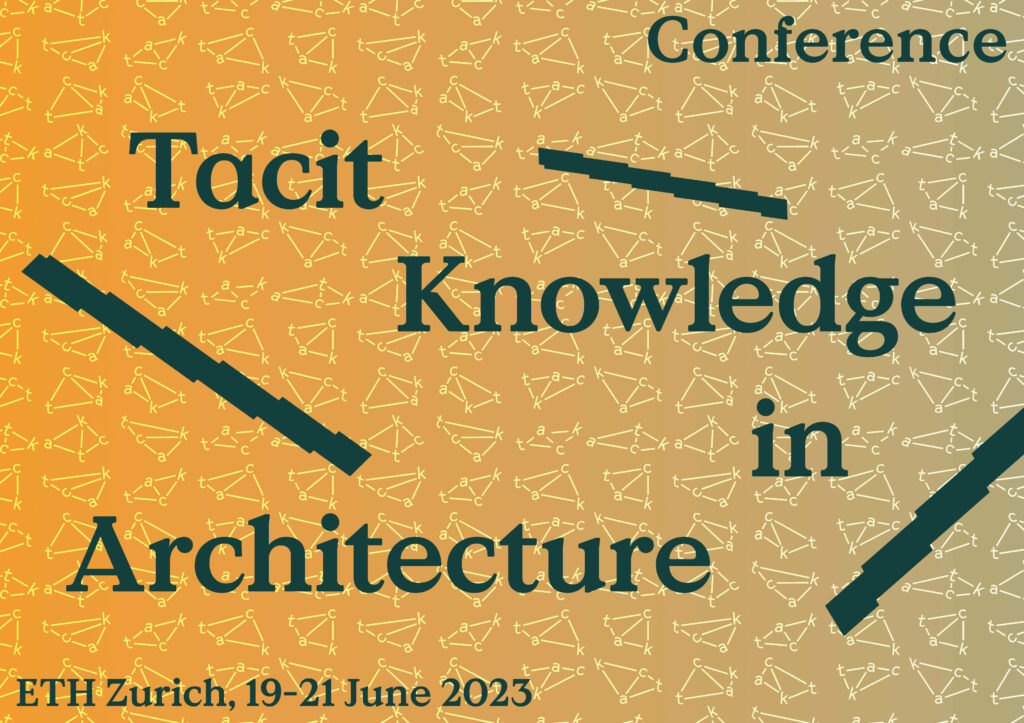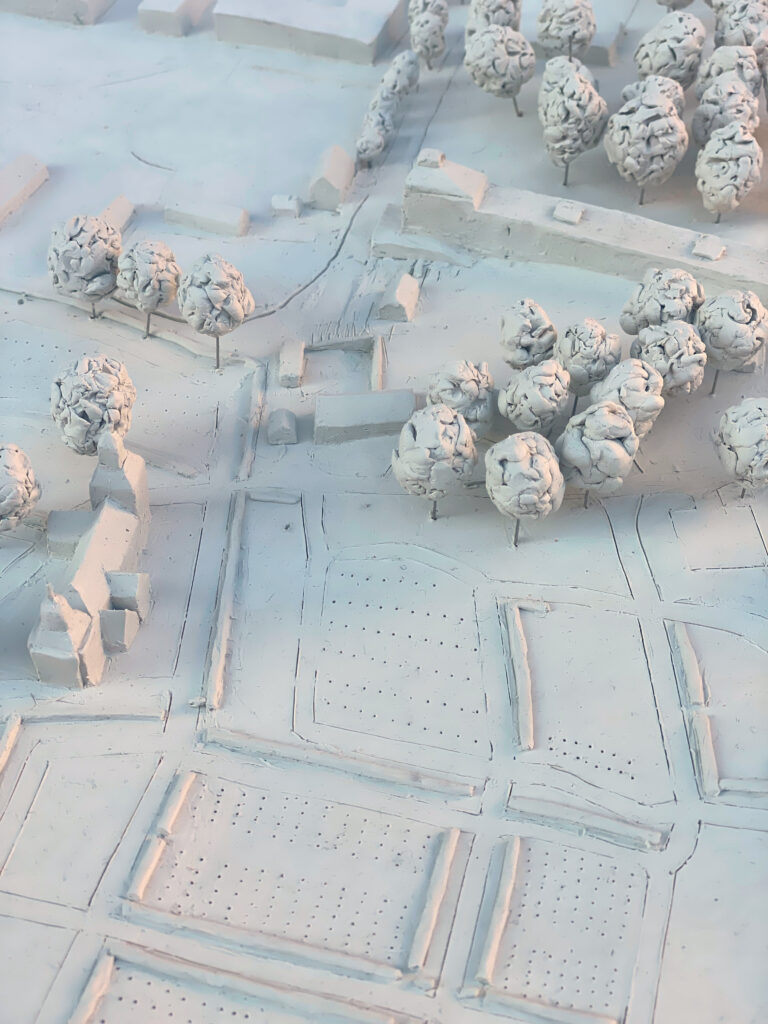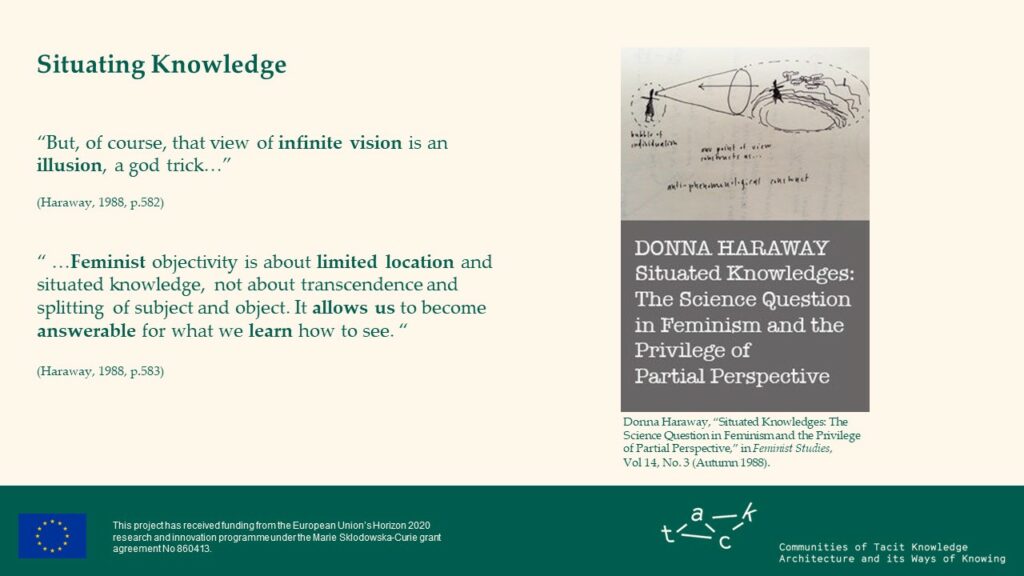Return to archive
title
Tactiles
submitted by
Katharina Kasinger

Tacit(t)act, Rotterdam, 2021 by Katharina Kasinger, Photo: Anne-Kathrin Brunier
Tactiles are relational objects that foster interactive approaches of un-learning restrictive spatial codes, re-learning through encounters of intimacy, embodiment and connectedness, and co-learning through shared performative experiences.
As a way of un-learning, tactiles identify urban infrastructures that determine spatial actions such as pavements, traffic bollards, traffic islands, and fences, and withdraw their prescribed purpose through alienation. Legible architectural codes are translated into unidentified objects that function as perceptive mediators between the acting body and the social forces of urban reality. By creating embodied experiences of spatial proximity, tactiles unravel tacit associations and layers of meaning and activate a process of re-learning.
Forms of co-learning were probed and enacted through various performative workshops. These workshops initiated an embodied and non-predefined communication through the objects that translated intuition, new thinking processes, and ideas performatively, while merging into a collective choreography.
Submitted by
Katharina Kasinger holds a BA in Interior Architecture from the Hochschule Mainz in Germany and an MA in Interior Architecture: Research+Design from the Piet Zwart Institute Rotterdam in the Netherlands. Katharina works as an artist, interior architect, and teaching assistant at Hochschule Mainz teaching ‘Material’ and ‘Spatial Design Processes’.
This object is part of the TACK Exhibition “Unausgesprochenes Wissen / Unspoken Knowledge / Le (savoir) non-dit”, in the section “Embodiment and Experience”.











